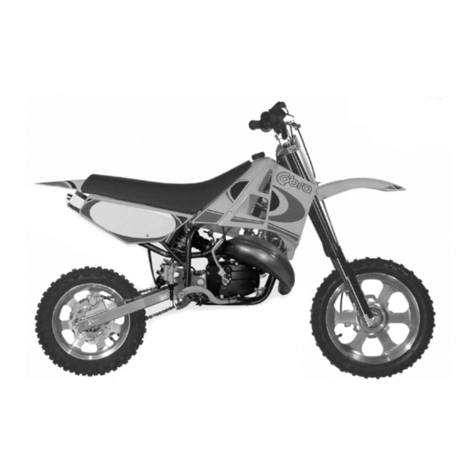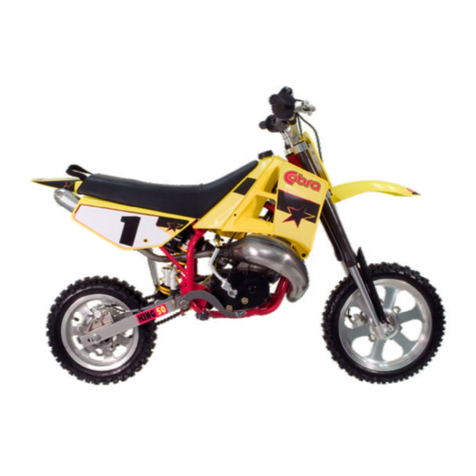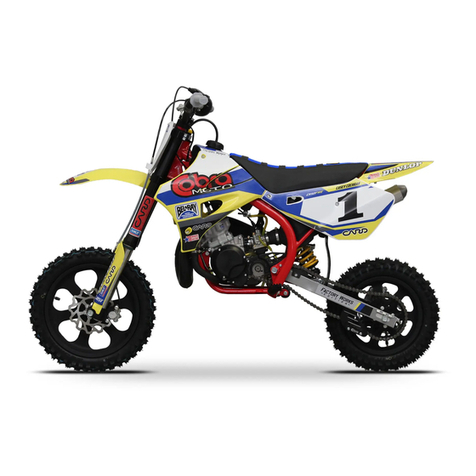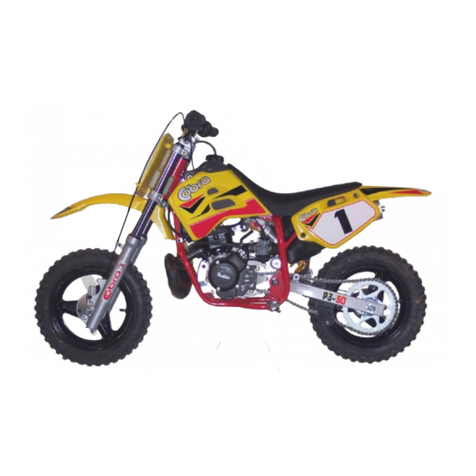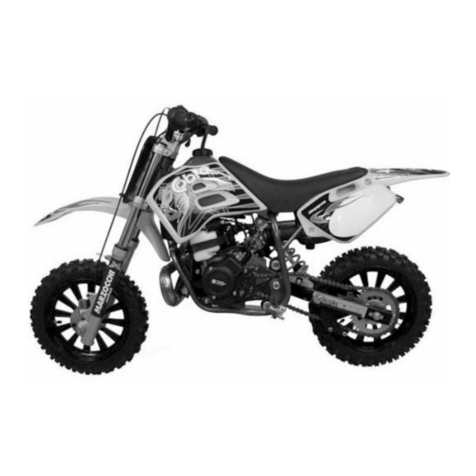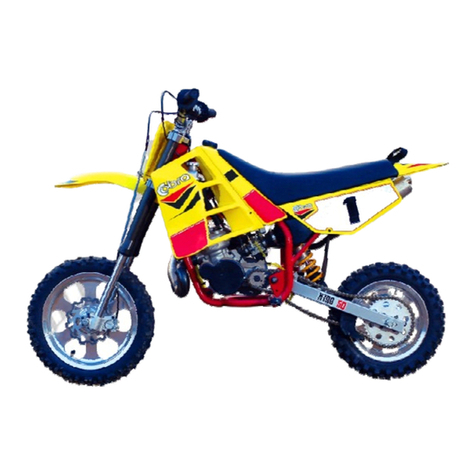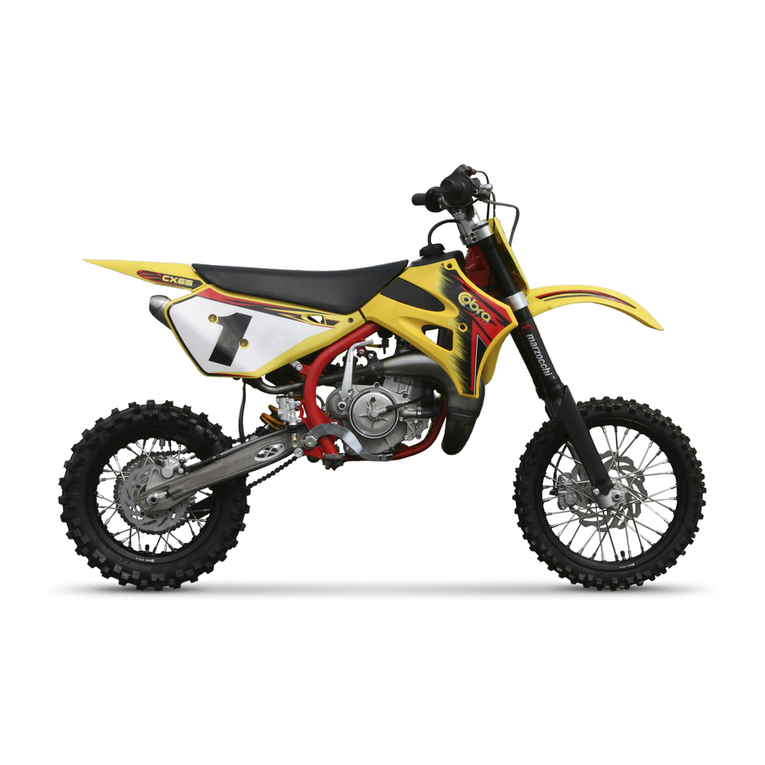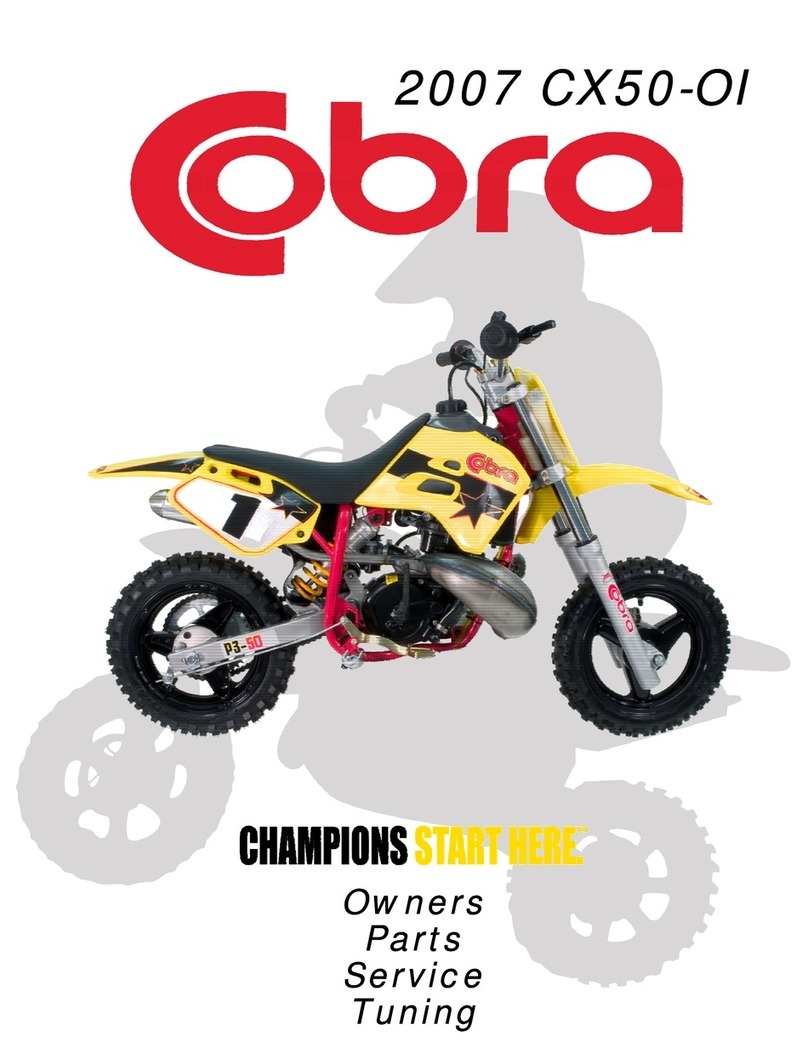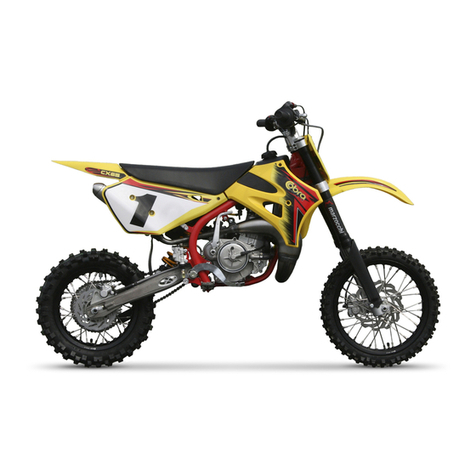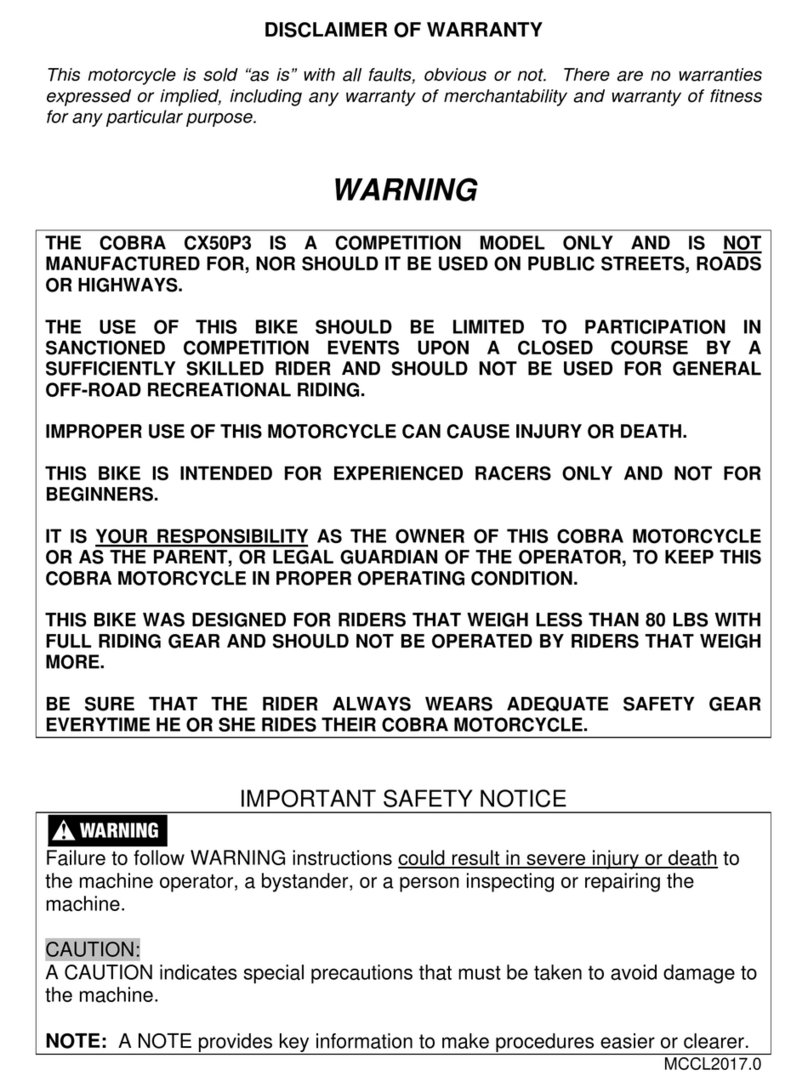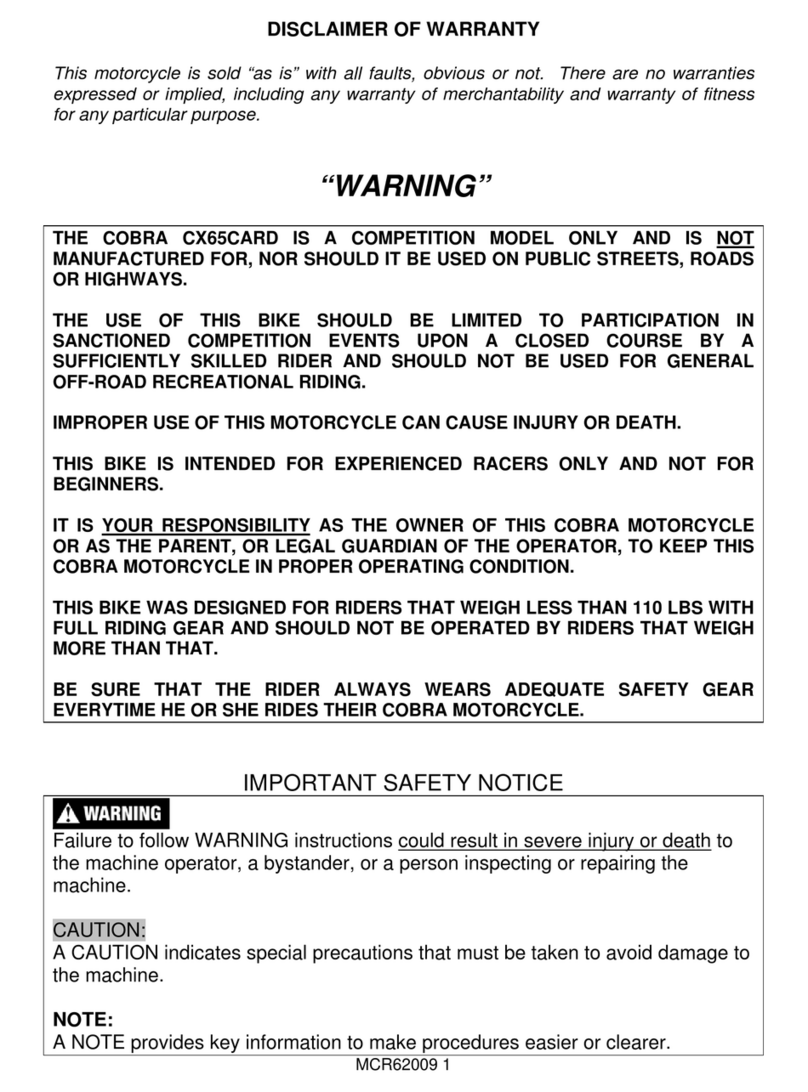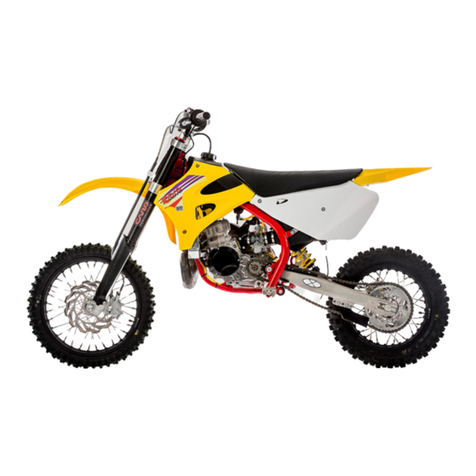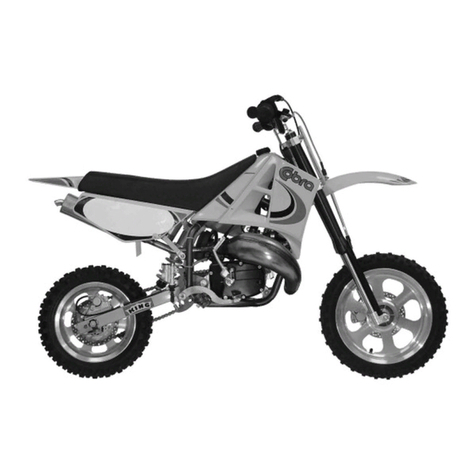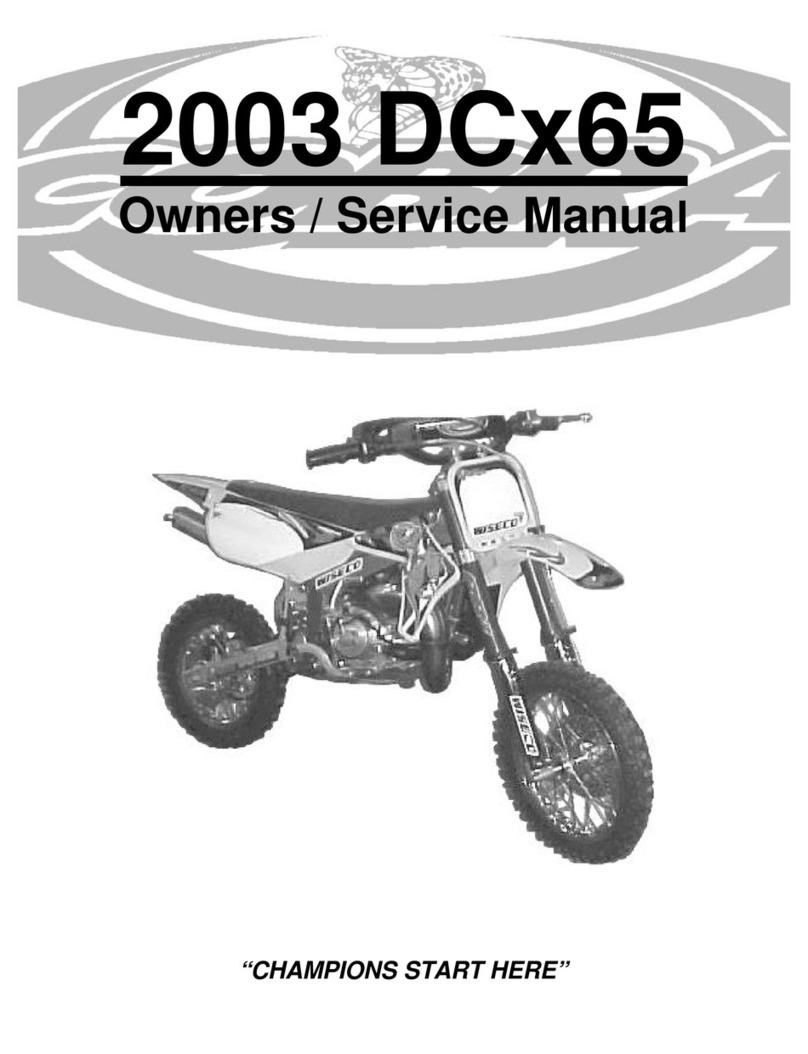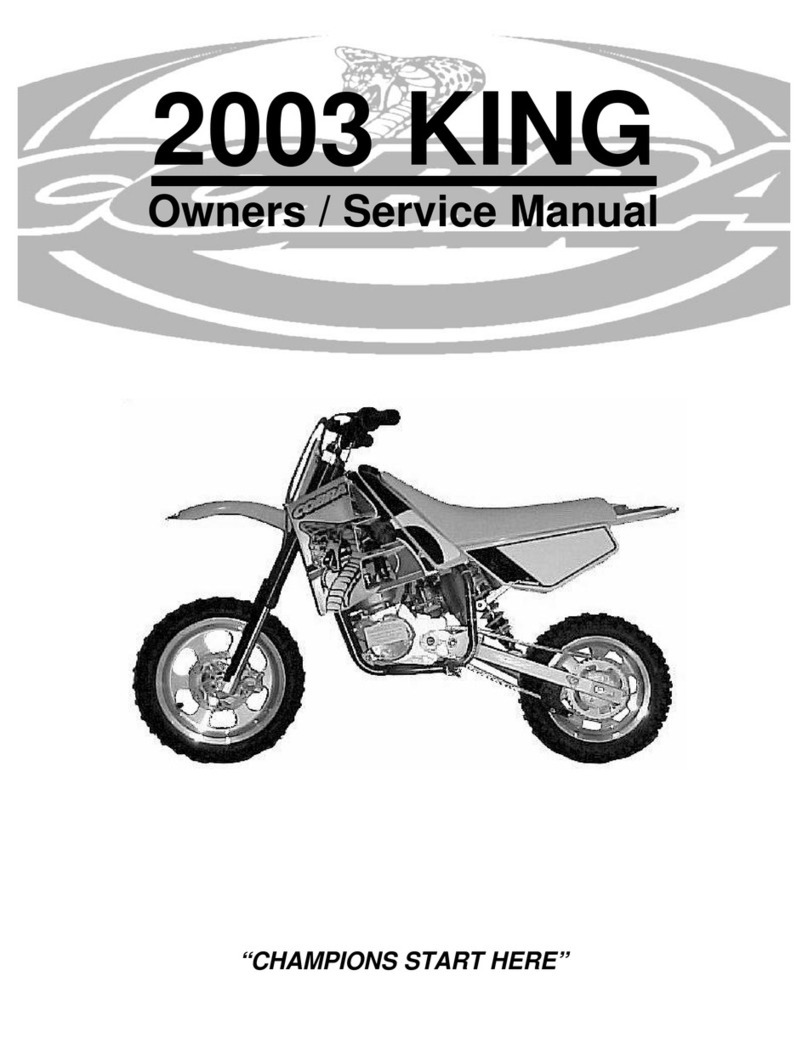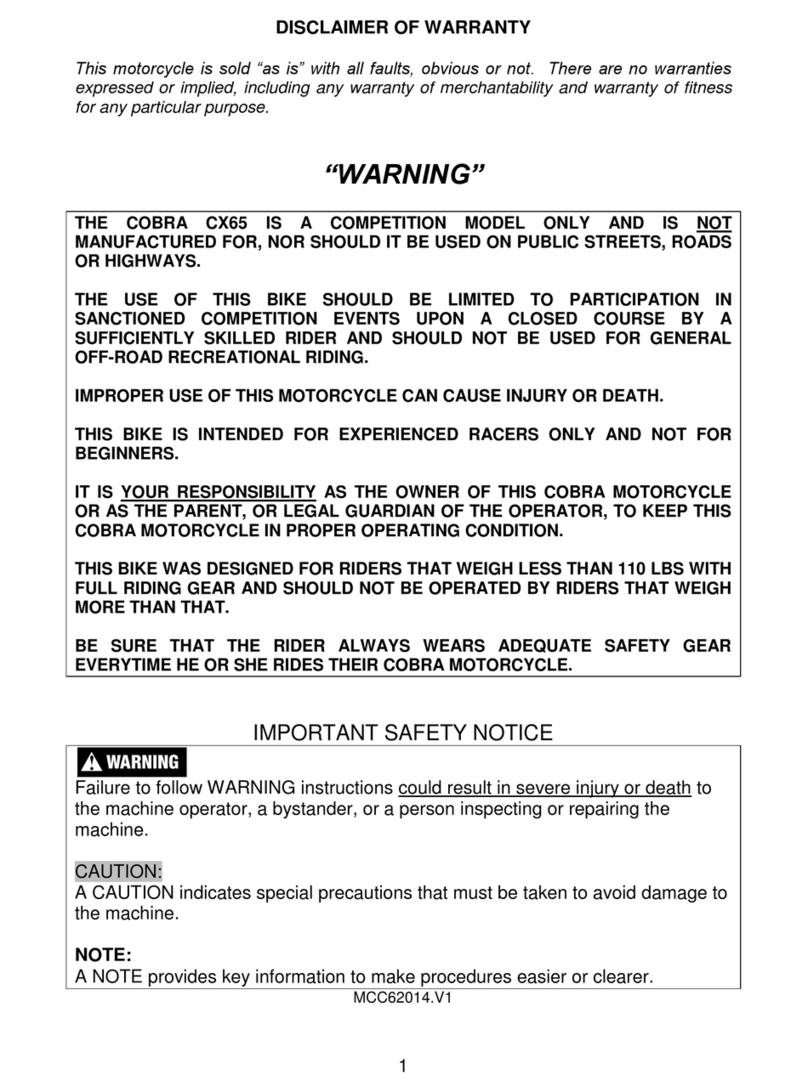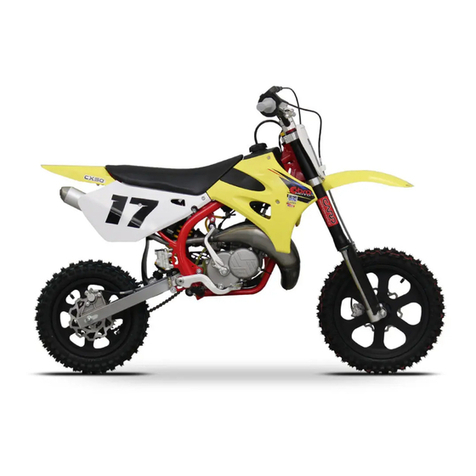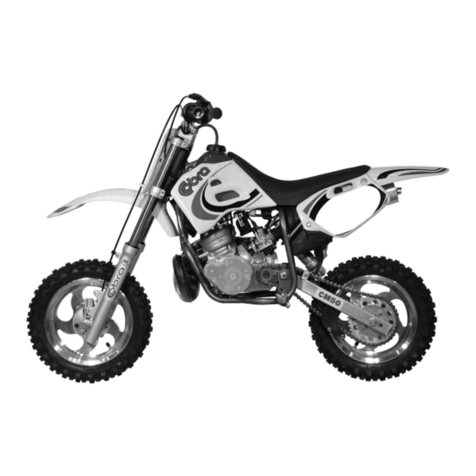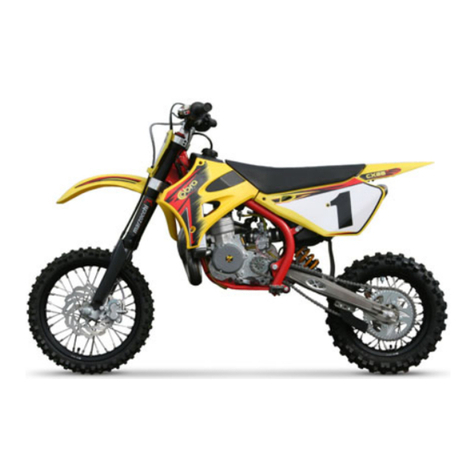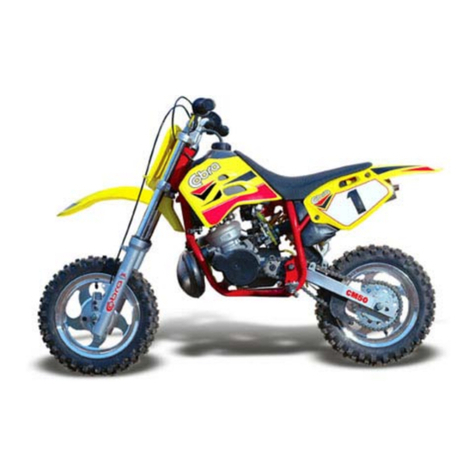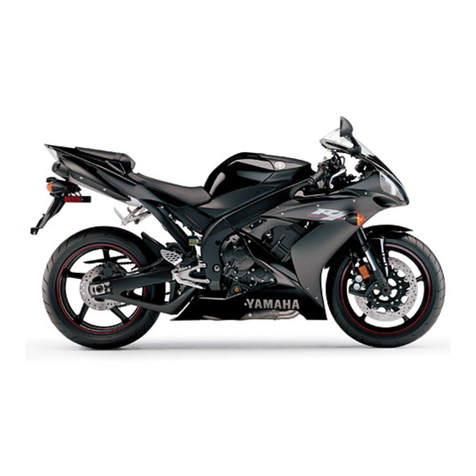
2
Table of Contents
General Information ........................................................................................................ 4
Specifications - General .............................................................................................. 4
Optional Suspension Components.............................................................................. 5
Specifications - Torque Values ................................................................................... 5
Break-In Procedure .................................................................................................... 6
Starting Procedure ...................................................................................................... 7
Maintenance ................................................................................................................... 8
Tips ............................................................................................................................ 8
Schedule .................................................................................................................... 9
Replacing Transmission / Clutch Lubricant ............................................................... 10
Proper Chain ad ustment .......................................................................................... 11
Rear Brake Maintenance .......................................................................................... 11
Brake Bleeding Procedure ........................................................................................ 13
Air Filter Cleaning ..................................................................................................... 14
Fork Maintenance ..................................................................................................... 15
Fork Air Bleeding .................................................................................................. 15
Fork Oil Replacement ........................................................................................... 15
Cobra Frictional Drive (V3 CFD) ............................................................................... 16
Parts ............................................................................................................................. 18
Parts – Airbox and Inlet System ................................................................................ 18
Parts – Bars and Controls ......................................................................................... 19
Parts - Carburetor ..................................................................................................... 20
Parts – Coolant System ............................................................................................ 21
Parts – Electrical System .......................................................................................... 22
Parts – Engine – Bottom End and Transmission ....................................................... 23
Parts – Engine Clutch and Kick Lever ....................................................................... 24
Parts – Engine – Water Pump .................................................................................. 26
Parts – Engine – Top End ......................................................................................... 27
Parts – Exhaust System ........................................................................................... 28
Parts – Forks & Triple Clamps .................................................................................. 29
Parts – Forks – Leg Assembly – Brake Side ............................................................ 30
Parts – Forks – Leg Assembly – Non-Brake Side ..................................................... 32
Parts – Frame – Mounting Hardware I ...................................................................... 34
Parts – Frame – Mounting Hardware II ..................................................................... 35
Parts – Front Brakes ................................................................................................. 36
Parts – Front Wheel .................................................................................................. 37
